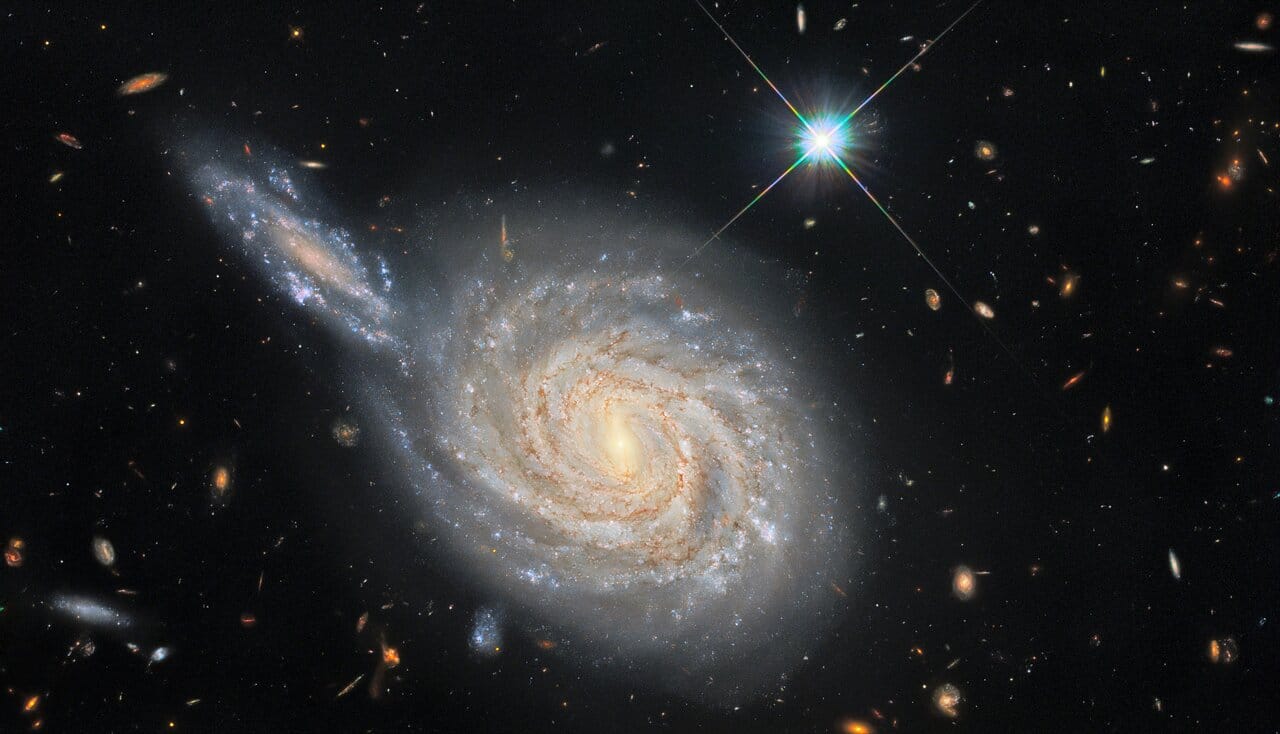

Somewhere in this Hubble image, two galaxies collide. And no, it’s not the two large spiral galaxies that seem to be sliding into each other.
The large galaxy in this week’s space photo is NGC 105. Located 215 million light-years from Earth, this spiral galaxy is located in the constellation of Pisces. The object was discovered in 1884 by French astronomer Édouard Stephan. NGC 105 cannot be seen even with good binoculars. You need a large telescope, which also explains why the galaxy was discovered relatively late.

To the left of NGC 105 we see another galaxy. It seems that this galaxy – PGC 212515 (or LEDA 212515) – collides with NGC 105. In reality, there is nothing wrong. The distance between PGC 212515 and Earth is 350 million light-years. This means that there is over a hundred million light-years of ‘space’ between the so-called colliding galaxies and that is more than enough. To put it in perspective, the Andromeda Galaxy is only 2.5 million light-years from our Milky Way.
Yet there are colliding galaxies to be seen in this beautiful photo. Then we first have to zoom in properly. Far in the background are several irregular galaxies of various shapes and sizes. And sure enough: there are even two colliding galaxies visible. Take a look at the cutout below. The colliding galaxies can be seen just below the center of the photo.

But there is more to see in the photo. See that bright star at the top right of NGC 105? That star is in our Milky Way. This object is therefore hundreds of thousands of times closer to Earth than NGC 105. You also see countless red dots. These are all galaxies billions of light years away from Earth. Fascinating!
Changeable star steals the show
The reason NGC 105 was photographed by the Hubble Space Telescope is because this galaxy is home to what is known as a Cepheid. This is a variable star that swells and shrinks regularly. As the star swells, the temperature increases and the Cepheid brightens. After this peak, the gas sphere shrinks again and the star cools down by about a thousand degrees. Cepheids are also very large stars, namely so-called supergiants. An average Cepheid variable has a diameter of fifty million kilometers. In comparison, the sun has a diameter of more than one million kilometers.
Various supernovas
NGC 105 also contains three more Type Ia supernovae, namely SN 1997w, SN 2006tg, and SN 2007A. This type of supernova occurs in narrow binary star systems, where one star is a white dwarf and the other a red giant (or a second white dwarf). Type Ia supernovae play a crucial role in our understanding of the universe. The type Ia supernova is the brightest type of supernova: it radiates more than a billion times more energy than our sun. This allows them to be seen over great distances. In addition, in their violent explosions, they eject many elements from which new stars and galaxies emerge.
Astronomers can use Type Ia supernovas and Cepheids to more accurately determine the distance to distant galaxies. In that regard, NGC 105 is the perfect ‘guinea pig’ for astronomers, as both objects are present here.
Source material:
Image at the top of this article: NASA